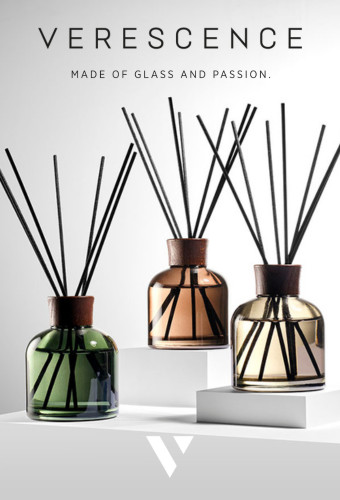Premium Beauty News - A significant part of your work as a researcher focuses on how the appearance of products, in particular packaging, influences consumers. Why is design so essential?
Gordy Pleyers - In recent years, scientific research has largely highlighted the fundamental importance of design elements, particularly through packaging.
Unlike written elements, design elements have the enormous advantage of being able to exert an “automatic” influence, without really requiring time or mental resources from individuals. This is an extremely valuable characteristic in our societies where individuals are bombarded with products and advertisements and do not have the time or the capacity to really process them.
Our studies demonstrate that influence through design can be particularly powerful and can lead to very diverse and sometimes unsuspected types of reactions.
Premium Beauty News - What do these studies consist of?
Gordy Pleyers - They are carried out in the laboratory and use cutting-edge methods. Their interest is to overcome the problems linked to “traditional” approaches, by examining reactions in a very precise and reliable way, without distorting biases, including at the “less conscious” level. Typically, this involves varying the design elements one at a time, keeping all other factors constant, to isolate the specific impact of each element. These studies are conducted either on behalf of brands that submit their products for analysis or as part of pure scientific research.
Premium Beauty News - What are the important design elements, and what are their impacts?
Gordy Pleyers - A wide variety of elements can have a significant influence. Examples include shape, color, font, images, texture, engravings, and various decorative elements. The impacts can be on very different dimensions such as attention capture, the emotions aroused, or the activation of relevant thoughts and values such as premium, luxury, efficiency, reliability, well-being, or even eco-responsibility. Our recent studies show that the impact of product design can even be on the sensory dimension, i.e. in particular the smell perceived in relation to a cream, a perfume, etc. The fact that two identical products with differing designs are perceived as sensorially distinct highlights the irrational nature of perception, making it a truly fascinating subject.
Premium Beauty News - During Paris Packaging Week at the end of January, you will present how the level of visual complexity in a product affects its perception.
Gordy Pleyers - We recently conducted a series of studies examining perceptions activated by products that varied only in their degree of visual complexity. Specifically, individuals were randomly exposed to pairs of products that included a visual element that was either composed solely of major lines or many fine lines with a higher degree of elaboration. These studies measured how this visual complexity activated or not notions such as premium, prestige or authenticity, but also specific sensory perceptions.
In first series of studies, already published in a scientific journal [2], the variation in complexity was applied to the visuals displayed on the product label. Given the very interesting results obtained, a second series consisted of varying the complexity of the engraving on a perfume bottle. This was made possible thanks to the involvement of Verescence, a global leader in luxury glass bottles, which covered the logistics costs and specially produced the necessary bottles. This has led to some very interesting results, with major implications for brands in the sector. And indeed, we have agreed to reveal these results as part of a conference at Paris Packaging Week on January 28.
Premium Beauty News - Do these studies open up many perspectives?
Gordy Pleyers - Yes, first of all because they highlight the importance of considering each element separately. Then because they allow us to know how to exploit each element in order to generate the desired impacts, in line with the benefits of a product and with the positioning of the brand. The insights gained are undoubtedly valuable for brands. As far as we are concerned, they also hold significant scientific value, as they offer an opportunity to deepen our understanding of the mental mechanisms underlying these fascinating phenomena.
Premium Beauty News - How can these studies help Verescence customers?
Bérangère Raguenet - Packaging is the first point of contact between consumers and brands. Just like the fragrance it contains, the bottle must serve as a vector of emotions.
The strong eco-design trend in packaging as well as the upcoming regulatory constraints require us to rethink making of luxury glass bottles. Significant work is needed to design new packaging in line with these trends while maintaining strong desirability.
In this case, we decided to test the impact of engraving complexity. This was achieved thanks to Verescence’s expertise in translucent relief screen printing, a technique that allows the bottle to be personalized at the finishing stage without investment in the glass mold. This study enabled us to demonstrate how a more intricate engraving design on our standard Bowie bottle enhances its premium perception and increases its perceived value.
Neuroscience provides scientific answers to marketing questions that will concern the weight of the bottle, the design, as well as the type of finishing or decoration. With these studies we can help our clients design the most desirable packaging by comparing several design and decoration options. As the tests can be conducted on the basis of 3D visuals, it is possible to question the target consumers upstream of the development phase, which is a major advantage regarding the timing of a project.








































